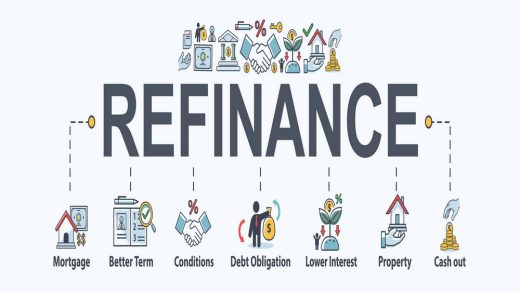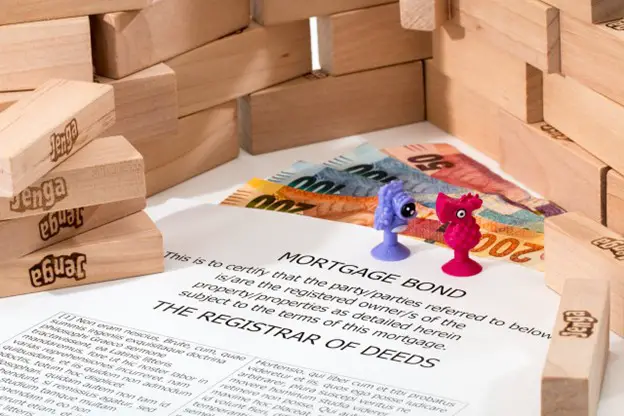Breaking down the mortgage process guide, home finance tips, Online property expense advice
Breaking Down the Mortgage Process: A Step-by-Step Guide
14 February 2024
Embarking on the journey of buying a home can be as thrilling as it is complex, with the mortgage process often being one of the most intricate parts to navigate. Understanding the steps involved is crucial to making informed decisions and moving smoothly toward homeownership. In this guide, we’ll break down the mortgage process into clear, manageable steps, providing a roadmap that can help demystify the path from application to closing. Whether you’re a first-time buyer or a seasoned investor, this step-by-step guide aims to empower you with the knowledge you need to secure your home with confidence.
Choosing the Right Mortgage Lender
Selecting the right mortgage lender is a critical step in the home-buying process. It’s not just about finding the lowest interest rates; it’s about ensuring reliability, and customer service, and finding a partner willing to guide you through the complexities of the loan process. Whether you are looking for the best online mortgage lenders or prefer the personal touch of a traditional brick-and-mortar institution, it’s essential to do your research and compare different lenders before making a decision. This step is crucial because the right lender can make all the difference in securing the home of your dreams.
Assessing Your Financial Readiness
Before you embark on the exciting journey of home hunting, it’s vital to take a comprehensive look at your financial health. Assessing your financial readiness not only gives you a realistic view of what you can afford but also strengthens your position when it’s time to apply for a mortgage. Start by examining your current income, savings, debts, and credit score.
Your debt-to-income ratio, for instance, will play a significant role in determining how much you can borrow. A high credit score and a solid savings account for a down payment and closing costs will also work in your favor, making you a more attractive candidate to lenders. Preparing your finances early can lead to a smoother mortgage process and a better chance of approval for the loan you need to purchase your home.
Understanding Mortgage Pre-Approval
Gaining a mortgage pre-approval is a significant milestone in the home-buying journey. It involves a preliminary screening by a lender to determine if you meet their requirements for a loan, and how much they would be willing to lend you. During this process, you’ll need to provide financial documents, such as tax returns, pay stubs, and bank statements, which allow the lender to examine your financial stability and creditworthiness comprehensively. A pre-approval letter can make you a more competitive buyer, showing sellers that you are serious and have the backing of a financial institution. Keep in mind, though, that pre-approval is different from a final loan commitment and may still require additional verification and underwriting before you can close on a property.
Exploring Mortgage Options
When it comes to choosing a mortgage, the variety of loan products available can seem overwhelming. It’s crucial to understand the different types of mortgages to select the one that best aligns with your financial goals and circumstances. Fixed-rate mortgages offer the security of a consistent interest rate and monthly payment for the life of the loan, making budgeting easier.
Adjustable-rate mortgages, on the other hand, may start with lower interest rates that can fluctuate over time, potentially leading to significant changes in your monthly payments. Additionally, certain loan programs, like FHA loans, VA loans, or USDA loans, are designed to help specific groups of buyers. When exploring mortgage options, consider the loan term, rate type, program requirements, and any potential penalties or fees, and weigh these factors against your long-term financial plans.
Completing the Mortgage Application
The mortgage application is a detailed document that requires you to provide a wealth of personal and financial information. At this stage, it’s essential to be organized and thorough. You’ll need to have your financial records ready, including recent pay stubs, tax returns, bank statements, and any other assets or liabilities.
Additionally, details regarding the property you intend to purchase, such as the type of property, the purchase price, and the expected down payment, will be required. During this process, stay in communication with your mortgage lender, as they may need to verify information or request additional documentation to proceed with your application. Patience and accuracy here are key; a complete and precise application can speed up the approval process and get you one step closer to securing your new home.
In conclusion, the mortgage process can be complex, but breaking it down into manageable steps can help ease any anxieties you may have. Choosing the right lender, preparing your finances, obtaining pre-approval, understanding mortgage options, and completing a thorough application are all crucial components in this journey toward homeownership. Armed with this knowledge, you can confidently navigate the mortgage process and turn your dream of owning a home into a reality.
Comments on this guide to breaking down the mortgage process article are welcome.
Home Mortgages
Mortgages Posts
Pros and cons of 15-year vs. 30-year mortgage

6 ways that may lower your mortgage interest rate
Are You in the Gray Area in Your Mortgage?
How is COVID affecting mortgages advice
Tips how to hire best mortgage broker in UK
Can reverse mortgage allow me to retire sooner?
Building Articles
Residential Property
Comments / photos for the Breaking down the mortgage process advice page welcome.






